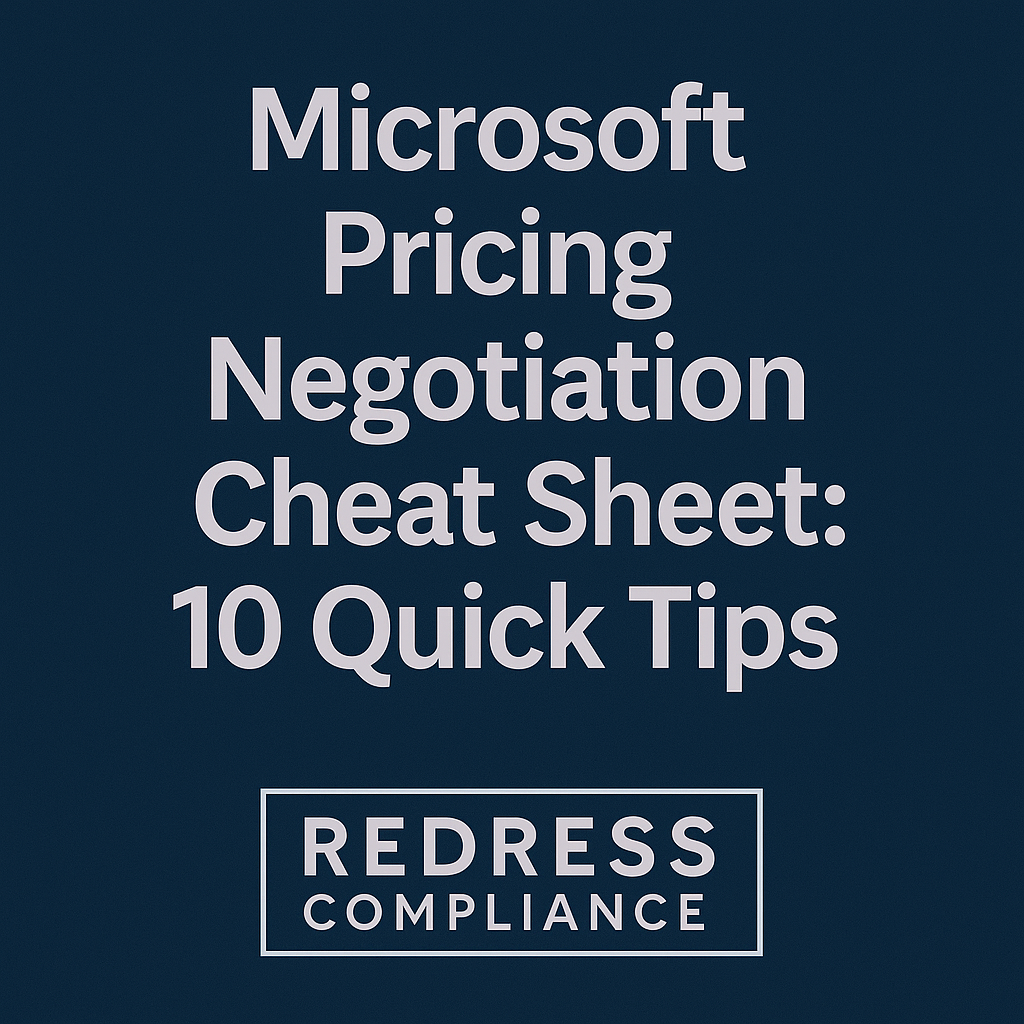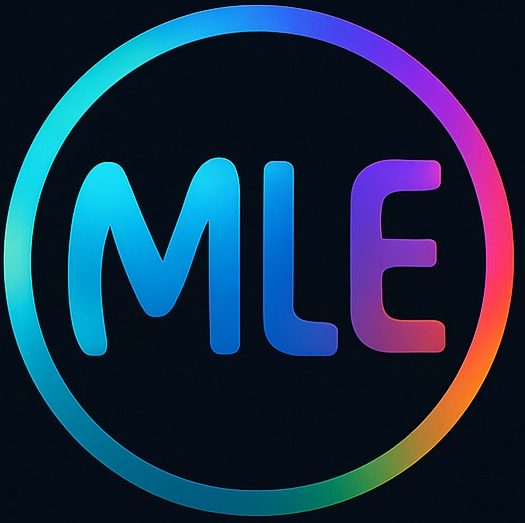Microsoft Pricing Negotiation Cheat Sheet

Introduction – Why a Cheat Sheet Matters
Negotiating Microsoft licensing can feel overwhelming due to its complex terms and high stakes, but having a simple list of 10 proven Microsoft pricing negotiation tips provides procurement teams with a ready-to-use playbook for driving better deals.
Think of it as a licensing cost checklist that flags potential savings and protects your interests. Goal: quick wins that reduce costs and secure key protections in your agreement. Read our complete guide to Microsoft Pricing & Discounts.
Below are 10 quick tips to help you achieve those wins.
- Never Accept the First Quote – Always counter because Microsoft often pads its initial offers. The first price you receive usually has an extra margin built in, expecting negotiation. In fact, it’s not uncommon to see a better discount (or extra perks) offered once you push back on that initial number. Even if the initial quote seems reasonable, assume there’s a better deal available. Microsoft anticipates savvy customers will push back, so meet that expectation and insist on more.
- Break Down the Bundle – Demand itemized pricing for everything in the deal. Microsoft’s bundles can hide the true cost of each component; insisting on a line-by-line breakdown will reveal overpriced items you can target for discounts or removal. Bundled deals might also include licenses or add-ons you don’t need, so by unbundling, you can remove those extras and focus only on what delivers value to your organization. This way, you avoid paying for features you won’t actually use.
- Know Your Numbers – Enter negotiations knowing exactly what you pay per user now and what discount or target price you expect. For example, if you’re paying $50 per user today, aim for $40. Any offer above that number clearly isn’t good enough — you’ll know to keep pushing until the price meets your goal. It also signals to Microsoft that you’ve done your homework and expect competitive pricing.
- Time It Right – Use Microsoft’s fiscal deadlines to your advantage. Sales teams are under pressure to hit quotas at the end of each quarter (and especially by fiscal year-end in June). By timing your negotiation for those last few weeks of a quarter, you catch your rep when they’re extra motivated to close the deal. A proposal that felt lukewarm in March could suddenly improve in late June — that time pressure often leads to discounts or concessions not offered earlier.
- Trade Growth for Discounts – Offer future volume or new product adoption in return for better pricing now. If you plan to expand users or add new Microsoft services, mention that growth as a bargaining chip — Microsoft may reward your future commitment with a lower price today. For instance, committing to add 200 more Office 365 seats next year or piloting a new Azure service could win you a steeper discount on this renewal. Just ensure any growth promise is realistic so you’re not over-buying solely to get a discount.
- Benchmark Aggressively – Research what similar organizations are paying for Microsoft deals, and use those numbers as leverage. If you can cite a credible benchmark — say a peer company got 20% off — Microsoft will feel pressure to match it. They know big customers share information, so showing you have market data gives you a strong negotiating edge. Make sure your comparisons are fair and relevant (similar deal size and scope) so Microsoft can’t dismiss your benchmark as unrealistic.
- Cap Future Increases – Don’t let a multi-year deal’s savings be wiped out by big price hikes later. Negotiate a cap on any future increases — for example, no more than 3–5% per year or tying adjustments to inflation (CPI). Microsoft might start by suggesting a standard 10% uplift each year, but you can push for lower. Setting a cap keeps costs predictable and ensures the discount you win in year one isn’t gone by year three.
- Play with Terms – Longer commitments can bring bigger discounts, but weigh that against the flexibility you might lose. If you commit to a multi-year (say, 3-year) contract, you could lock in a better rate. However, if your company might downsize or switch tools within a year or two, a shorter term (even if it’s a bit pricier) could actually cost you less. Always assess how stable your needs are before choosing the longest contract term.
- Negotiate the Total Cost – Focus on the total multi-year cost of the deal, not just the per-license price. Microsoft might give you a great deal on one product while keeping other fees high. Add up all the expenses — licenses, support (like Unified Support), maintenance, and any add-ons — to see the real impact. Ensure the final agreement aligns with your overall budget; a low unit price is meaningless if a substantial support fee or overage costs erase those savings. For instance, if you reduce your license count, make sure any related support fees (which often scale with spend) are adjusted down as well.
- Challenge Everything – Don’t assume any fee or term is off-limits just because it’s labeled “standard.” If there’s an automatic annual increase or a stiff penalty that doesn’t make sense, call it out and ask for it to be removed or reduced. The worst they can say is no, but more often than not, Microsoft will find a way to grant an exception when you press the issue. By showing you’re willing to question boilerplate terms, you set the expectation for a customized deal instead of a one-size-fits-all contract.
Avoid regrets, Hidden Costs in Microsoft Licensing Deals and How to Avoid Them.
Checklist – Microsoft Negotiation Essentials
- ✓ Don’t accept the first offer
- ✓ Demand itemized pricing
- ✓ Know per-user cost targets
- ✓ Time negotiations for fiscal deadlines
- ✓ Use future growth as leverage
- ✓ Benchmark against peers
- ✓ Secure price caps on increases
- ✓ Weigh contract term vs. flexibility
- ✓ Focus on total cost, not just line items
- ✓ Push back on all “standard” charges
Read about our Microsoft Negotiation Services
Microsoft Pricing & Discount Negotiation Tactics: How to Cut Renewal Costs
